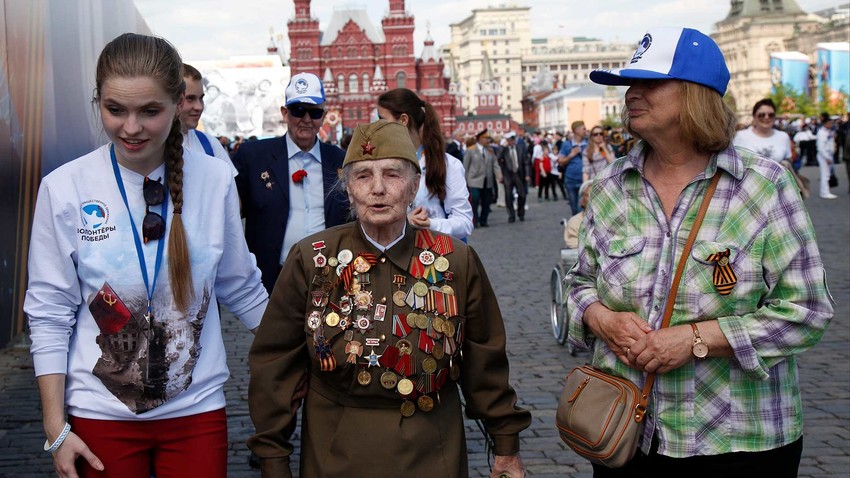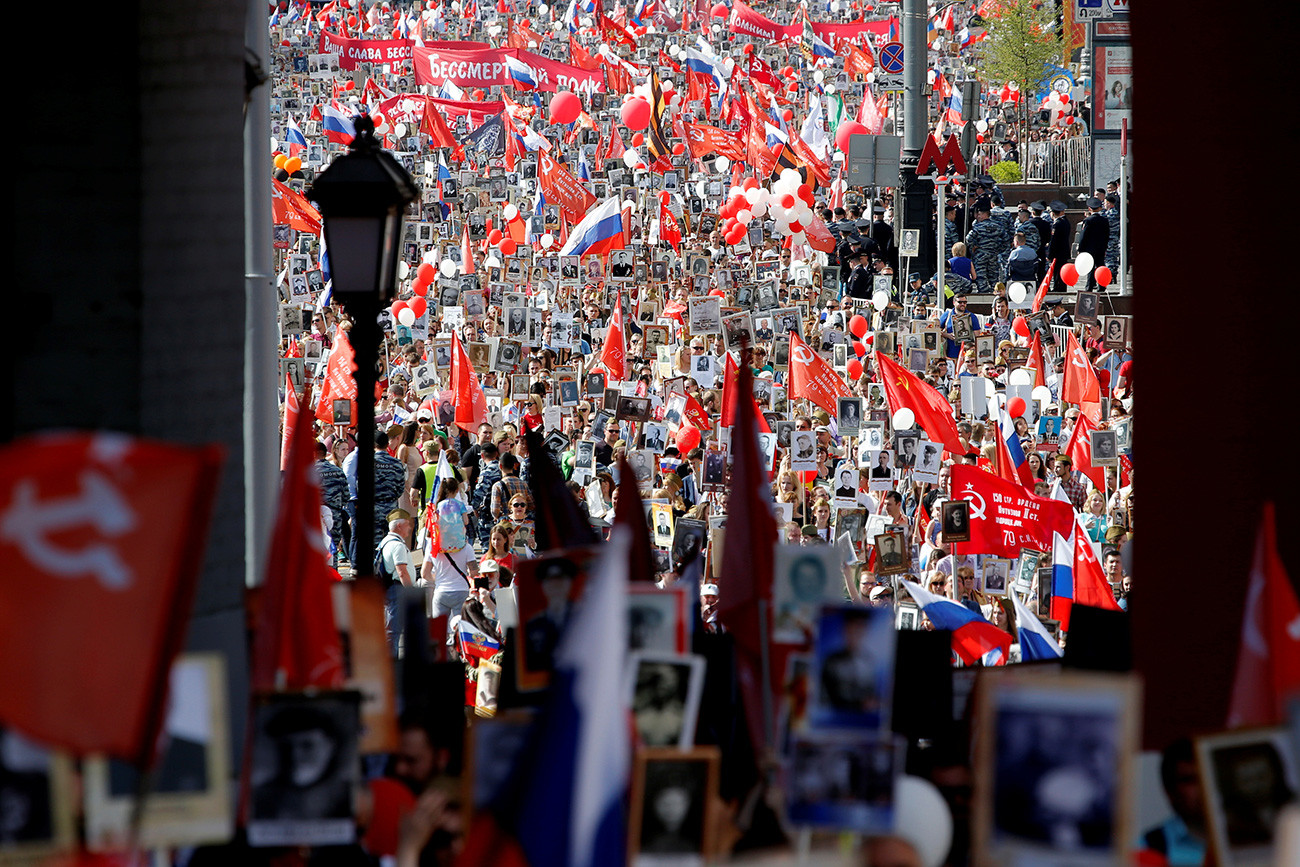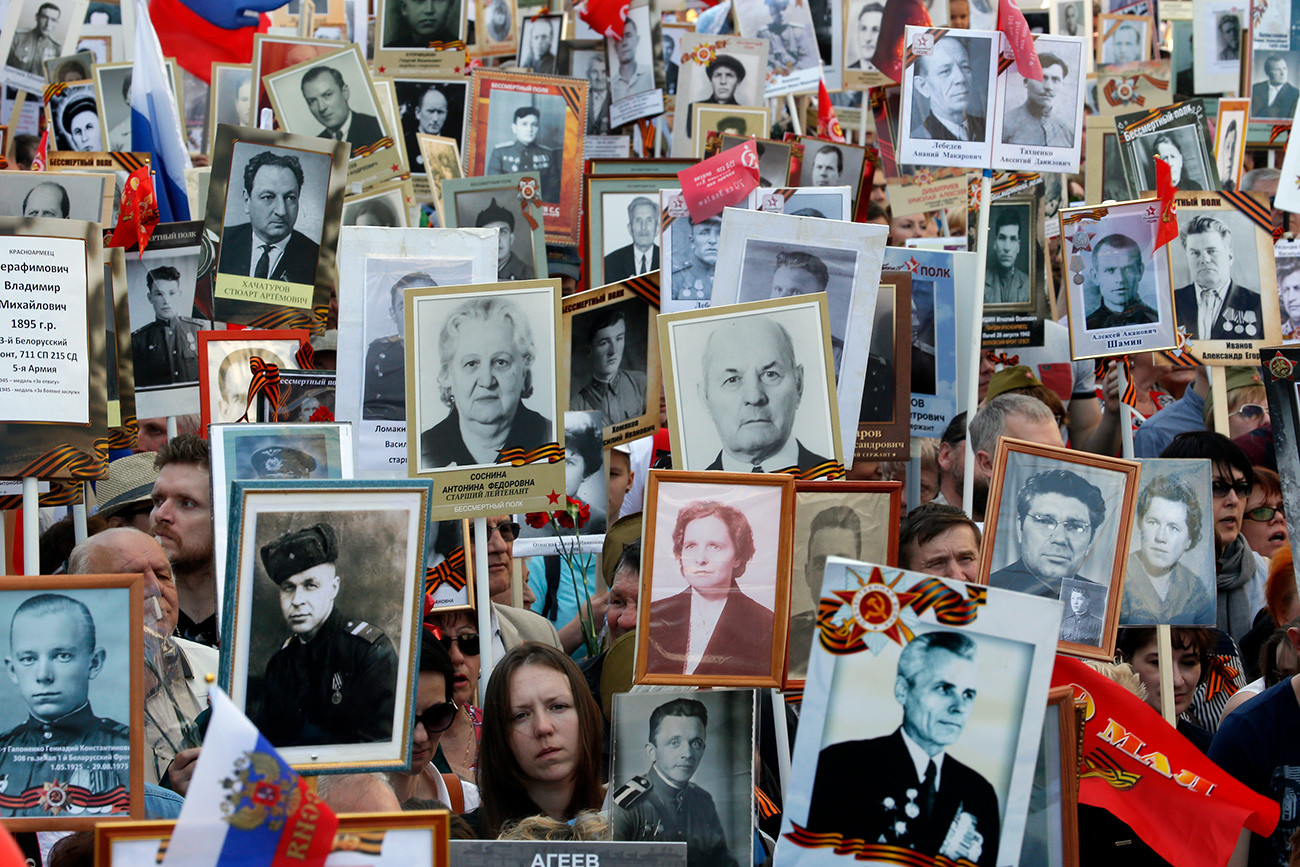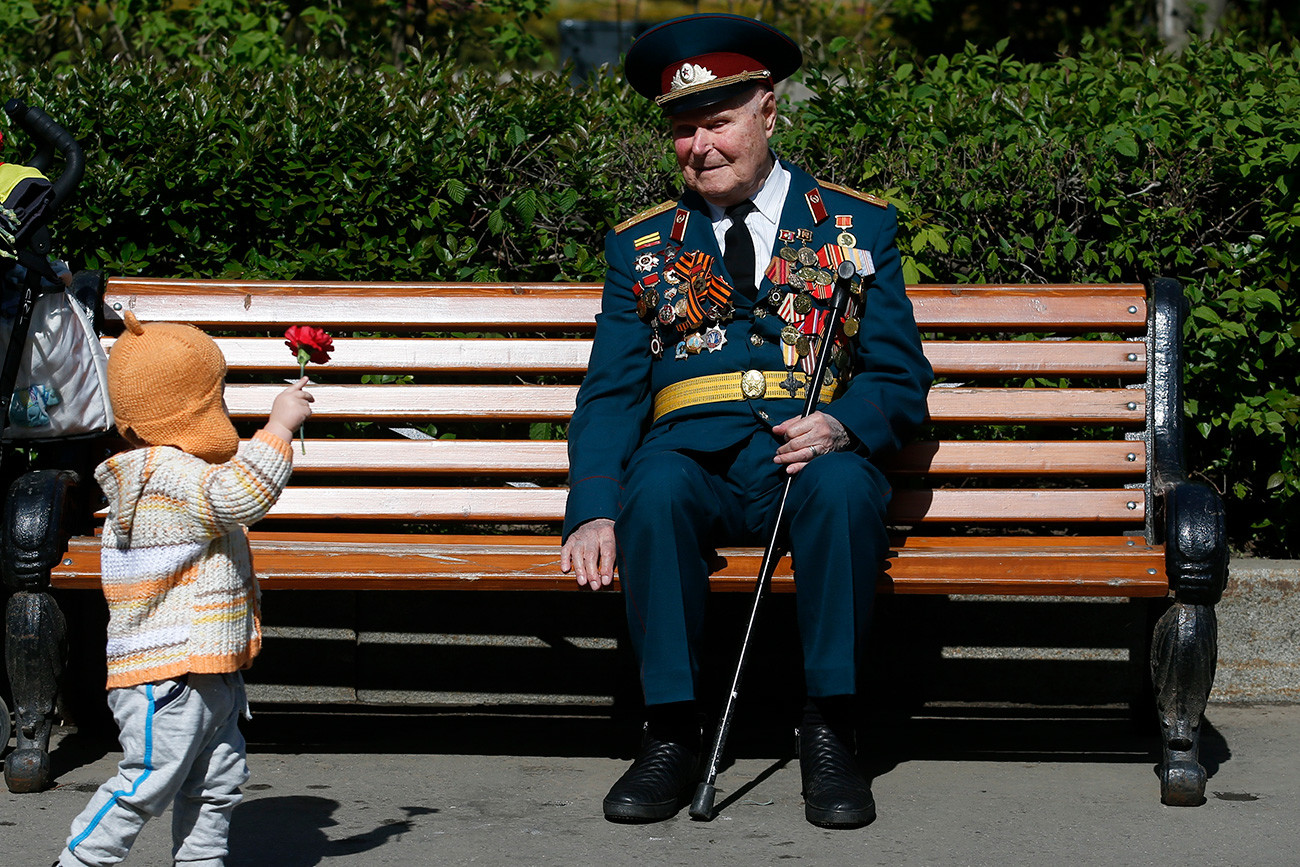How Russia keeps alive the memory of its Great Patriotic War heroes

In April 2017, state statistics reported that about 1.8 million veterans of the Great Patriotic War were still alive in Russia. Of that total, less than 200,000 actually fought, while more than a million were home-front workers.
With each passing
Likewise, fewer and fewer veterans show up at official events organized on May 9. The most popular meeting place for veterans is the fountain by the Bolshoi Theater in Moscow. There, veterans dress with medals pinned to their old military uniforms.
‘Immortal Regiment’

While more than 70 years separate us from May 1945, the victory is still very important for the national identity, which can be seen in the many events dedicated to May 9. The most significant project in recent years, whose goal is to keep alive the memory of the war generation's great deeds, celebrates those veterans no longer alive. Known in English as “The Immortal Regiment” (Bessmertniy Polk), every year on May 9 tens of thousands of people in cities throughout Russia walk down central streets with portraits of relatives who fought in the war and who are no longer living. The event is also marked across the globe, last year taking place in 40 countries.
The Immortal Regiment was originally a
The Tomsk event quickly became famous, and the following year the Immortal Regiment paraded along the streets of more than 100 Russian cities. By 2014, it marched through 500 cities. Two years ago the event became even

‘I remember’
In
The Victory Volunteers also compile recollections of veterans. Established at the time of the war’s 70th anniversary, it has almost 200,000 participants. Volunteers say their goal is providing assistance to needy veterans. Also, in recent decades veterans have been helping each other through a national network of organizations, and both local and federal authorities support them in this endeavor.
‘Memory of the people’

Besides the many public events, Russia has a number of state projects dedicated to the victory. Two years ago the Defense Ministry launched the website, Podvig
Another ministry portal, Pamyat
The Ribbon of St. George (Giorgievskaya
The ribbon’s colors are the same as the Guards Ribbon during the war, and the name also pays homage to the ribbon of the Order of St. George established by Catherine the Great as the Russian Empire’s highest military honor.
Today, the Ribbon of St. George is distributed en masse throughout Russia and in many countries across the globe.
If using any of Russia Beyond's content, partly or in full, always provide an active hyperlink to the original material.
Subscribe
to our newsletter!
Get the week's best stories straight to your inbox